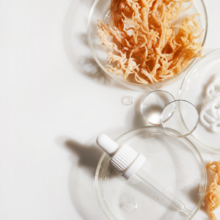Why You Should Eat More Chocolate: Chocolate is a Pain Reliever
- Published: Tuesday, May 12th 2015
- in Nutrition
 People love chocolate and it totally loves them back. The cocoa in chocolate creates something like a birthday party in your brain, with neuroactive agents to boost endorphin levels (natural opiates), stimulate your brain’s cannabis receptors, light up the brain’s pleasure centers, increase serotonin levels, and provide phenylethylamine (PEA, also known as the love drug because it is also released when one falls in love).
People love chocolate and it totally loves them back. The cocoa in chocolate creates something like a birthday party in your brain, with neuroactive agents to boost endorphin levels (natural opiates), stimulate your brain’s cannabis receptors, light up the brain’s pleasure centers, increase serotonin levels, and provide phenylethylamine (PEA, also known as the love drug because it is also released when one falls in love).
Of course, every chocoholic on the planet knows this already, and will quickly tell you that chocolate indeed “brings the happy.” But there’s another side of this feel-good coin that most people don’t even know they’re benefiting from! In addition to increasing pleasure, chocolate also decreases pain.
In this study, patients with peripheral artery disease (PAD, a condition producing severe pain when walking any distance, for any length of time) consumed 40 grams of 85% chocolate. After only two hours, they were able to significantly increase both their distance and walking speed! Why would chocolate help reduce pain for these patients? First of all, a principle cause of PAD is actually restricted blood flow in the peripheral arteries, and high cocoa chocolate can measurably improve blood flow. But another reason for chocolate’s pain reducing properties is that – like the drugs naproxen, ibuprofen, and aspirin – the cocoa in chocolate is strongly anti-inflammatory. However, unlike the drugs naproxen, ibuprofen, and aspirin, chocolate’s side effects do not include “gastric erosions” that can lead to stomach ulcers, and even severe hemorrhage. Just sayin’.
Inflammation is critical to reduce because inflammation causes the feeling of pain. Dark chocolate (85%) decreases inflammation molecules (isoprostanes) before they start. Think of it as a very delicious version of an aspirin, but one that goes much better with a glass of red wine.
Yet another cool thing about chocolate is that it can block inflammation molecules from being formed in the first place! In this study, experimental animals had just 10% of their diet supplemented with straight, standard cocoa powder for 2 weeks. Even with just this amount, consistently added to their diets, inflammatory molecules were prevented from being created. The authors recommend that cocoa might even be used as a natural therapeutic to help reduce chronic pain.
What if you aren’t a lab mouse, or don’t have some clinical condition like PAD? What if you’re just a normal person who may exercise and then end up with creaky, achy joints? If that’s you, you may feel that post-movement aches and pains are just something you have to live with. But they’re not. The regular consumption of high-cocoa dark chocolate can help reduce soreness after exercise.
As a matter of fact, in this study, two groups of exercise cyclists rode for an amazing 2.5 hours. One group ate 100 grams (about 3.5 ounces) of 70% dark chocolate 2 hours before cycling. The second group ate a snack containing the same macromolecules included in dark chocolate but without the cocoa. A third group ate nothing. This study design allowed researchers to see whether it was actually the cocoa that reduced the inflammatory markers or not. They discovered that groups 2 and 3 (the cyclists who had eaten nothing and also those who had eaten the snack without cocoa) both had higher levels of the inflammation molecules that cause the sense of pain. Meanwhile, a full hour after exercise, the group who had eaten dark chocolate had levels of inflammatory pain-producing molecules (isoprostanes) that were absolutely unchanged from their pre-exercise levels!
Pre-loading with dark chocolate can help prevent post-exercise pain. Add this to the list of wonderful benefits! Just keep in mind that it’s the cocoa itself that provides all the pain reducing benefits. So in order for chocolate to become your new favorite pain reliever, treat it as a cocoa-delivery device for your body and choose chocolate that’s as dark as you can enjoy!



